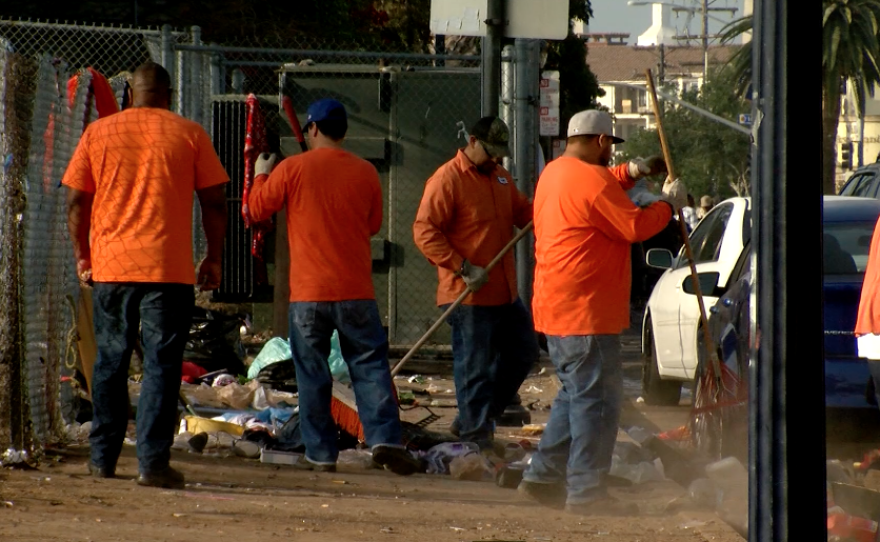Exactly one year ago this month, people living on the streets in San Diego were under siege. A man brutally attacked five homeless men, setting two on fire. Three died.
KPBS recently spoke with San Diego Police Lt. Carole Beason about where the city now stands when it comes to violence against people who are homeless. Beason first reflected on how the police department's Homeless Outreach Team responded to last year's attacks.
RELATED: Invisible But In Danger: San Diego’s Homeless Are Targets For Attacks
Lt. Carole Beason said the team and other officers "were out every single day making sure that those folks knew what was going on, that they had the best description that we had. And we’d offer services and tell them, 'Hey, this is a bad situation. You’re being targeted out here. Can we help you?' So anytime something comes up, we try to get as much information to as many people so that they’re at least informed of what’s going on."
Q: So what I have been told by homeless people and by advocates for the homeless is that many of them tend to not report crimes to police. Either they are scared or they think they will not be heard. Has that been your experience?
A: I honestly couldn’t speak to whether or not people are reporting crimes. That is obviously their choice if they want to. But a lot of times, people do report that they have been the victims of the crimes. And officers go out and they take that investigation just as seriously as they do any other investigation.
Q: Some advocates say, look, these constant police sweeps end up dehumanizing the homeless. And when other people see this dehumanization that it makes them act as predators toward the homeless and then they end up committing crimes against the homeless. What do you think of this characterization?
A: First of all, what I’d tell you is that being homeless is not a crime and all of the San Diego police officers are very cognizant of the fact that being homeless is not a crime. They work very hard to help people end their homelessness.
Q. But when these sweeps occur, do you think that there is an aspect of criminalizing the homeless?
A: Not at all.
Q: Why?
A: First of all they’re not sweeps. It’s what we would call an abatement and it’s going out with environmental services. And what they’re doing is trying to clean up trash, debris from the sidewalks and the streets that would be unsafe. It’s about doing the cleanups and not a sweep. Their purpose is to keep the city clean.

Q: What can people who are homeless do to make themselves less vulnerable, less of a target of crime?
A: Honestly, taking advantages of the resources that are available is the best thing I think anybody that’s homeless can do to try to end their homelessness. As long as they’re out on the street, they are vulnerable. So anything they can do to help end their homelessness by reaching out to us so we can help them.
Q: You mentioned resources. What are those resources?
A: On my team I have six officers that work full-time. I have two health and human services agency employees that work with me and we also have a psychiatric emergency response team clinician that works with us. What my team does is they have the luxury of the time to sit down with someone who is homeless and determine what their unique circumstances are and see what resources are available. Basically when it comes to homelessness, it is a community problem. It’s not just a police problem. It’s not a service provider problem. We as an entire community have to solve this problem.

Q: One of the common refrains I heard from homeless people is that a lot of passers-by, onlookers say some really horrid things to them and will kick them and if they are sleeping at night would walk on them. Do you have anything to say to people who do that?
A: I remind people all the time that that person didn’t always live on the streets. That’s somebody’s mother. That’s somebody’s father, aunt, uncle, brother and to see beyond the situation and see that person that’s in there.







